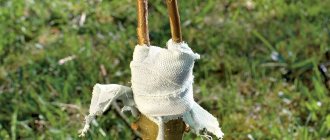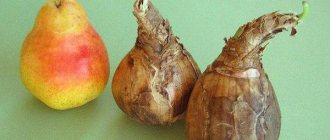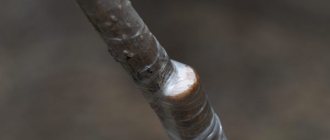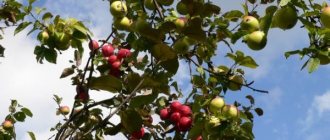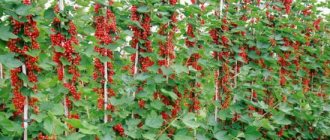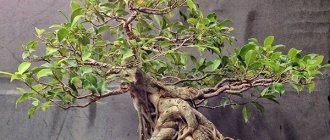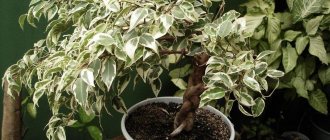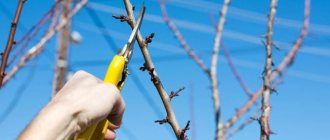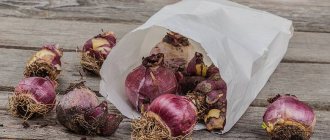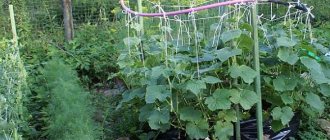Cultivated cherries are short-lived. Its lifespan is from 15 to 30 years. And no matter how much the gardener would like to extend the allotted period, it is unlikely that he will succeed. However, this can be done by regrafting the tree.
It often happens that when buying a seedling, you come across a self-sterile variety - the cherry blossoms, but there are almost no berries. A tree may break, but the root remains alive. Here are the reasons for vaccination.
In addition, as a result of crossing, you can get completely new, improved plant characteristics:
- The fruit on the tree will be of two types;
- The type and variety of cherries will be preserved;
- The quality characteristics of the cultivated variety will improve;
- The harvest can be harvested earlier and the number of berries will increase significantly.
That is, there are positive aspects. But a novice gardener often has questions about when is the best time to vaccinate and whether other species and varieties are suitable for this operation. What other ways can you propagate cherries and how long will it take to wait for results? Answers to all questions about cherry grafting can be found in this article.
What is grafted and rooted cherry?
Unlike other stone fruits, cherries form root shoots. It happens that a tree stops sprouting. Then you can cut the chibouks and germinate them. In both cases, cherries obtained in this way will be called own-rooted. If you plant such a seedling, the tree will be more durable than a grafted one. This is important because something grown on a rootstock can grow and bear fruit for no more than 30 years. True, the coppice plant is slightly inferior in terms of the time it begins to bear fruit. If grafted cherries begin to produce crops in the third or fourth year after planting, then self-rooted ones begin to produce crops in the fourth or even fifth year. In addition, the berries of a rooted plant may differ for the worse in taste and weight from those of a cultivated plant. Grafted cherries are trees that consist of a rootstock and a scion. For the rootstock, the lower part of the plant, zoned varieties are chosen.
The rootstock is “responsible” for frost resistance, anchoring, and the ability to collect moisture from the lower layers of the soil. And the scion is the cultural, upper part. It determines the yield, the timing of ripening of berries, their taste and size, as well as disease resistance. We will talk about these and other methods of propagating cherries below. This link will tell you how to get rid of cherry trees on your property.
Advantage of the method
So, the agrotechnical technology of grafting is represented by the possibility of transferring one fragment of a plant to another, for their fusion into a single organism, but with new features and properties.
The scion, the aboveground part of the tree with properties that influence the future quality of the fruit and harvest, is fused with its underground fragments, namely the rootstock, which affects the functional characteristics of the plant.
The advantage of the method lies in solving several problems at once, namely:
- The preservation of the varietal qualities of the tree being described, since seed propagation of certain varieties negatively affects the characteristics obtained from the mother plant;
- In forcing the harvest period. A grafted cherry is ready to bear fruit after just 2 years, while trees sprouted from a seed will take much longer - about 5-8 years.
- In the rejuvenation of plantings. Unproductive aged trees are pruned and then crossed with young cuttings.
- In increasing the resistance of plants to various types of diseases and negative environmental conditions. The so-called hybridization helps in merging delicate and vulnerable garden varieties with their hardy wild relatives.
- In combining the characteristics of certain varieties in a single representative.
- This is a factor in saving garden space, since shoots of a wide variety of cherry varieties can grow on one standard plant.
Important! Grafting can help save a damaged or even broken tree, but only if the plant's root system is alive.
Reproduction methods
When planting a cherry orchard, you need to know about the methods of propagation of this species. And also about the positive and negative aspects of each of them, in order to choose the most optimal and less material-intensive one for yourself. At the same time, the trees should be frost-resistant, productive, and also have good resistance to diseases characteristic of stone fruit crops. Today there are the following methods of propagating cherries:
- Cuttings;
- Graft;
- Bone;
- By layering;
- Cherry shoots.
Read about cherry seedlings here.
Below is a brief description of cherry propagation methods that will be of interest to a novice gardener.
By cuttings
One of the simplest options.
Cuttings are a method of vegetative propagation of plants. It is based on the ability to regenerate into roots and shoots from individual parts. Cherries have green shoots.
You just need to wait a little until they harden and turn red at the base. Planting material is prepared in the morning or evening. The cuttings should be about 30 cm long. All leaves are cut off before placing the branch in water.
To make the root formation process faster, you can add Zircon to the water.
Bone
A tree can be grown from a seed. This is also an option that does not require material costs. But it is impossible to predict what berry will grow on this tree in the future. In most cases, such plants do not repeat the maternal characteristics. But cherries grown from stones can be used in the future as a rootstock for breeding new varieties. The process of this method of reproduction is quite simple:
- Rinse the seeds in water and let dry in the sun;
- Place in a linen bag or paper bag;
- In winter, carry out stratification. Place the bones in sand and wet moss. Cover and place in the cellar or refrigerator. During this time, the hard part will soften and then it will be easier for the sprout to reach for the sun;
- Plant in prepared soil to a depth of 2-3 cm, cover with transparent film and place the pot on the windowsill;
- When the sprout rises 20-30 cm, it can be planted in open ground.
By layering
Layerings are plants that are obtained by rooting shoots in the ground without separating them from the cherry. To obtain a seedling in this way, carefully lower the lower branch to the ground and press it on top with a hairpin. This could be a small wooden spear, or a bent metal rod. Place a mound where the shoot touches the ground and then water it. The soil here should be constantly moist.
The cuttings remain in this position of rooting in the ground for a whole year. And only then the seedling is very carefully separated and transferred to its permanent habitat.
This method of propagation is better suited for bush forms of cherries.
Overgrowth
Shoots are shoots growing from an underground trunk and then emerging from the ground. That is, in the place where the cherry grows, young shoots begin to appear. As soon as they grow by 1 meter, the seedlings can be dug up and transplanted to the desired place in the garden. This method is used everywhere, but it has taken root best in Siberia and the Urals, since trees grown in this way are frost-resistant. And during prolonged severe frosts, when almost all the buds freeze out, it is the shoots that very quickly return to normal.
The disadvantage of propagating cherries by shoots is that they enter fruiting later than grafted trees.
Vaccinations
Grafting is a vegetative method of propagating cherries by a scion, which gives rise to an aerial part from the eye, and a rootstock, which forms the root system of the plant.
The method is used if they want to get a new variety with good characteristics. To achieve the desired result, wild varieties of two-year-old plants are used for the rootstock. Although it is possible to re-graft a completely mature cherry. For example, if a shoot or some tree of little value for a gardener grows in the garden, then it is regrafted with a good variety.
If there are several trees of the same variety in the garden, then some of them can be grafted. The right time for such an operation is spring or summer.
Vaccination dates
Some garden crops, such as grapes, can be grafted and pruned in winter. This is convenient for the gardener - after all, there is little work on the site at this time. But it is better to plant cherries in the spring, when intensive sap flow begins. Then the scion and rootstock grow together well. If this operation is late, it can be carried out in the summer, but the survival rate in the second half will be much worse, since at this time the wood already becomes more fibrous and the cambium of the scion and rootstock do not fit tightly to each other. Therefore, it is better to do summer grafting in the first half of the season, when sap flow is still good. It is not worth grafting cherries in winter, since the rootstock is dormant and therefore the survival rate at the point of contact will be zero.
It is better to re-graft adult trees not in one year, but over two or even three. This avoids a sharp imbalance between the root system and the above-ground part of the cherry.
When to take cuttings
Cuttings for grafting can be prepared three times a year:
- in the fall (after leaf fall ends and stable cold weather sets in), cuttings are prepared for grafting cherries, plums, apricots and other stone fruits;
- in winter (late February - March) cuttings of apple, pear and other pome crops are harvested;
- in the summer (at any time) green cuttings are prepared for rooting, grafting and propagation of bushes and trees, which are not stored, but used in the coming days.
In winter, cuttings can be cut only after the frosts have passed, since at temperatures below –10°C the wood becomes fragile and the mother plant can be injured.
Flight preparation of cuttings for rooting
Most berry bushes reproduce well by rooting cuttings, so if you see a curious variety from someone you know, you don’t have to look for the same one in the store - just ask for a twig and work on it a little.
What can you vaccinate on?
For the vaccination to be successful, you must adhere to the following rules:
- It is better to plant stone fruits in the spring;
- Summer operations must be carried out on cloudy, cool days;
- Avoid vaccinations on a very hot or rainy day;
- If absolutely necessary, you can vaccinate in the autumn, but only when the gardener has enough experience;
- The operation should be carried out carefully and quickly. A sharp and absolutely clean knife. By quickly performing grafting, you can avoid drying out the junction and at the same time not worsen the conditions for merging the shield and branch.
When a gardener wants to develop a new variety or wants to see several varieties of cherries on one tree, they graft cherry onto cherry. You can graft cherries onto cherry plums, plums, bird cherry, and sweet cherries. That is, stone fruit plants. We will go into more detail about what you can graft cherries on below.
To the plum
Plum, especially when grown wild, is probably the best rootstock for cherries. The positive aspects of this crossing:
- The taste of cherries changes. It becomes sweeter, larger and more tender. That is, we get an almost new variety;
- The tree's resistance to stress improves, immunity against certain stone fruit diseases increases;
- The period of tree ripening is significantly reduced.
Moreover, if the plum serves as a rootstock, then it is responsible for nutrition and growth. And cherries for the quality of the berries.
For cherries
If you graft sweet cherries onto cherries, this increases their frost resistance. Grafting cherries onto cherries also takes place without any problems. And the rootstock and scion grow together well. For the rootstock, wild cherries or varieties such as Lyubskaya, Griot Ligelya, Podbelskaya, Kharitonovskaya, Izmailovskaya, Rubin and others are used.
For cherry plum
There are different views of gardeners on grafting cherries onto cherry plums.
Some argue that after this operation the survival rate is very good. In addition, the yield of the tree and its taste subsequently increase. Others, calling cherry plum a Russian plum, say that it can tolerate very low winter temperatures well and can impart good qualities to cherries. But cherry cuttings take root quite poorly on it.
Probably, it’s all about the skill of the gardener and the timing of vaccinations.
On the apple and pear trees
Unfortunately, grafting a pear and apple tree onto a cherry tree and vice versa can end in failure. And all because the seed graft does not take root well. If the gardener gets a positive result, the tree may either not produce a harvest at all or it will be very insignificant. The plant will lose its natural immunity and become vulnerable not only to temperature fluctuations, but also to diseases and pests. Usually, an attempt to combine stone fruits with pome fruits is doomed to failure.
For apricot
Apricot is rarely suitable as a rootstock for cherries. And there are certain reasons for this:
The percentage of fusion between the rootstock and scion in this case of cherries and apricots is extremely low.
If the experiment is a success, then the trees will end up with very fragile branches.
It is practiced to graft an apricot onto a cherry rootstock, onto which a plum or cherry plum was previously grafted.
For rowan and sea buckthorn
Although cherry and rowan belong to the Rosaceae family, it is not possible to graft these plants. After the operation they do not take root. Gardeners do not use sea buckthorn as a scion.
On the turn
Sloe is suitable as a rootstock for cherries. Sloe grafting is widespread and the results are good.
For bird cherry
Bird cherry belongs to the cherry subgenus (Cerasus) and is biologically compatible with it.
In addition, it is widely distributed throughout the country. Therefore, bird cherry is used as a rootstock for cherries by many gardeners. Especially in more northern regions. Bird cherry imparts frost resistance to cherries.
To another cherry
For grafting, the ideal combination is cherry on cherry. It can be any variety. The survival rate will be good. You can even re-graft an older cherry tree. But the tree will have good immunity against diseases and frost resistance if the rootstock is a wild one. She is the one who has good endurance.
Why do cuttings spoil?
Even if all imaginable and inconceivable rules are observed, many gardeners cannot understand why cuttings cut for storage rot. The most common cause for this is moisture or being stored for too long, but there may be other possibilities.
The cuttings froze
This can be determined by their “glossy” appearance and wateriness. In addition, if you put such cuttings in water, it will quickly become cloudy.
The cuttings have sprouted
At temperatures above 5°C, the cuttings begin to grow. If the buds hatch, it means that the dormant period is over, and there is no point in further storing the material.
The cuttings have dried out
High humidity and positive temperatures can also cause damping off of cuttings. Once they begin to grow, they become easy prey for fungi and viruses.
The cuttings have dried up
If the cuttings crunch when bent and break easily, it means that there was not enough moisture in the shelter and they died.
The cuttings are moldy
Stagnation of condensate in storage contributes to the appearance of mold. To prevent this from happening, moisture must be removed regularly. If mold has already appeared, it is urgent to wipe the cuttings, dip them in an aqueous solution of 1% iodine or in a 3% solution of copper sulfate, and then place them in a new, clean container for further storage.
Almost all of these types of damage indicate that the material is no longer suitable for further propagation - the cuttings will have to be thrown away.
Vaccination methods
It is necessary to prepare for vaccination. Everything should be at hand, since this operation must be carried out very quickly.
Figure: Types and methods of grafting fruit trees.
For any grafting method, you will need such equipment as a sharp budding knife, pruning shears, insulating tape, film, and garden varnish. To prepare garden varnish, you need to take two parts of rosin, which must first be crushed, two parts of wax and one part of pork fat. First, lard is heated in a container, wax is added to it, and only then rosin. You need to boil for at least 30 minutes, stirring the mixture constantly. After that, pour it into cold water, and then rub it with your hands until smooth.
You need to store the prepared product either in oiled paper or in a plastic bag.
Now that everything is at hand, you can start vaccinating. Each gardener chooses the method that works best for him: cuttings, buds, splitting.
Handle
Features of this type of vaccination:
- Cuttings are harvested when the plant is dormant. The best time is the beginning of winter before the onset of frost. Under no circumstances should the core freeze;
- Cuttings are taken with three buds;
- Store in damp sand in a cool place. For example, the basement. Cuttings should not be allowed to germinate;
- In the lower part, a cut is made at an acute angle, so that it is at least 4 times the diameter of the cutting;
- The upper cut is made above the kidney. The thorn cannot be left;
- After the cutting is inserted into place, it is tightly tied with twine to the tree and coated with garden varnish.
The wound should be treated with varnish or oil paint so that no water gets into it.
Kidney
Kidney vaccination is carried out in late spring - early summer. Operation sequence:
- A T-shaped cut is made on the rootstock tree with a very sharp knife. First transverse, and then longitudinal. They capture not only bark, but also wood;
- The scion should be small, with one growth bud;
- Use a knife to lift the edges of the cut. Insert the tip of the shield, and pressing it slightly, move it into the incision;
- Press tightly with bark and wrap with film, twine or insulating tape.
Into the cleft
This method can only be grafted in the spring, because the scion will not take root in the summer. Stages of grafting into cleft:
- Prepare the necessary tools and garden pitch;
- Carefully cut the tree down to the stump for rootstock;
- The diameter of the rootstock trunk should not be less than 10 cm. Split the trunk to a depth of 2–3 cm;
- Make an oblique cut on the scion, resembling a tongue;
- Insert it into the split;
- Wrap tightly with insulating tape;
- Treat with garden varnish.
Figure: Grafting into cleft.
If the split is narrow for the cutting, you can carefully move it from side to side with a hatchet to widen it a little.
Duration of engraftment
Three weeks after the operation, you can already consider whether the vaccination was successful or not. If everything went well, then callus will form at the junction of the scion and the rootstock, and the bud will look healthy.
Vaccinations need to be monitored constantly. When the bandage cuts into the bark, it is loosened.
If callus has not formed, the buds have dried out, and the leaf petiole does not fall off when you touch it with your hand, then the grafting did not work. Therefore, you need to remove the insulating tape, film, that is, the material that was tied around the wound. Remove the scion and lubricate the affected area with garden varnish.
Care after vaccination
It will become clear whether the graft has taken root or not in a month. A positive result will be indicated by the scion buds and their growth.
At the end of the grafting process, it is necessary:
- Strengthen the branch with a special tire - for strength and protection of the scion from windy weather.
- The remnants of the grafting film should be removed after a certain period of time, but it is more advisable to leave everything as it is until next year.
- Supply the area near the rootstock with fertilizers containing nitrogen, phosphorus and potassium.
A careful approach to grafting with the choice of appropriate technology is the key to the success of the crossbreeding goal, and the first time.
Preparing the rootstock
If the rootstock is grown from a seed, it must be grown to the diameter of a pencil. Care includes standard procedures: watering, weeding, preventive measures against pests and diseases, fertilizing.
Read how to process cherries here.
Cuttings are harvested in the fall and stored in wet sand in the basement. If it’s not enough, then put it in the refrigerator. It is important that they do not freeze. There must be 3-4 buds on the branches.
Proper storage of fruit tree cuttings.
Before grafting, about a day before, the cuttings must be removed from the storage location and placed in warm water, having first checked for safety:
- Eye section. The buds are green. When pressed with a finger, they do not break;
- Cutting cutting. The inner layer of bark should be emerald green. The petiole depressions are smooth, brown or brown in color.
Harvested cuttings should not be damaged by frost or disease. A month before grafting, the cuttings are sorted, rejecting those that do not meet the requirements.
Dwarf rootstocks
Some gardeners are more inclined to grow dwarf breeds. They do not require a large feeding area, begin to bear fruit earlier, and such trees are easy to care for. They are not very demanding of moisture, are frost-resistant and take root in almost any soil. The best varieties that can be used for rootstock: Anthracite, Low-growing Moscow, Businka, Rubinovka, Ural Standard, Vita.
Colt - a variety obtained from the pollination of sweet cherries by cherries. If you graft trees on Colt, the size of the cherry crown will be half as large as on a tall rootstock.
Felt cherry as a rootstock
Felt cherry is a winter-hardy plant that does not produce root shoots and begins to bear fruit early.
In addition, it is high-yielding and is not afraid of long periods of drought. Therefore, it is often used as a rootstock for stone fruit crops. But with cherries, despite their close relationship, it is compatible only with certain varieties.
Preparation of rootstocks
If you decide to use one or more seedlings as rootstocks, then their preparation involves intensive care in order to bring their diameter to the thickness of a pencil. This care can be reduced to weeding, watering, and fertilizing. On the day of vaccination, preparation boils down to removing excess shoots and buds from the grafting area, as well as wiping it with a damp cloth to prevent dirt from getting on the wound surfaces.
How to attract bees for pollination
It's hard to imagine a garden without bees in the spring. After all, in cherries the process of fruit formation is associated with the exchange of pollen. And bees play a special role in this. But there are usually a lot of flowering trees in the area, so you need to attract these insects to the garden. This can be done in the following ways:
- Planting fragrant honey flowers: chamomile, echinacea, asters, mustard, phacelia, etc.;
- Use of sugar syrups with flavoring additives.
Why cherry blossoms but does not bear fruit read in this material.
Step-by-step instructions for the procedure
For beginning gardeners, there are instructions for grafting cherries in one way or another.
Copulation
You can graft a cherry either using a cutting - the so-called copulation, or with a bud - in the form of budding.
Copulation is suitable for twigs of the same size, with the most suitable diameter being 1.5 centimeters. Sections must be made at the ends of both the scion and the rootstock. The size of the cut should be within 3-4 centimeters.
After such preparatory work, both sections must be connected, so that the cambial layers have the same area. Wrap the junction with a special material, in the form of, for example, a film, or carry out a special treatment using the so-called garden varnish.
conclusions
I would like the garden to have many different varieties of fruit crops, with different ripening periods, high yields, frost resistance and unpretentiousness. So the gardener is experimenting by grafting trees. It's always interesting what will happen. If you graft a cherry onto a cherry, or a cherry onto an apricot, plum, cherry plum. Experienced gardeners have long been convinced that:
- Plum, cherry plum, and bird cherry are considered good rootstocks for cherries;
- A good result is obtained if the rootstock is cherry or sloe;
- Apple, pear, sea buckthorn, and rowan are not at all suitable for cherries as rootstocks.
Also read about grafting currants onto cherries in this article.
What trees can be combined with?
It happens that in the garden, apart from an old cherry tree, there is nothing fruit that could be grafted onto. And growing a new rootstock of the same variety is not only time-consuming, but also difficult, especially when there is no guarantee of grafting success.
But if a plum grows on a garden plot, then the crossing technology can be carried out directly on it. Moreover, this fruit tree is characterized not only by the strongest rootstock, but also by excellent adaptive capabilities.
Also, a cherry tree can be grafted onto fruit rootstocks in the form of:
- bird cherry;
- cherry plums;
- cherries;
- thorn.
The rootstock in the form of cherry plum has advantages - the crop is resistant to frost and has a well-branched and strong root system.
When crossing cherries, gardeners should know that merging them with cherries will go much faster, due to their excellent compatibility.
Additional Tips
Whether the new plant has taken root or not becomes clear after about a few weeks. This is evidenced by the scion buds, which increase in growth in case of a positive result. The remaining tape or grafting tape can be removed after a while, but it is better to leave it until next year.
Having chosen summer time for grafting, thoroughly water the trunk in advance to speed up the flow of internal sap. Particular attention is paid to the cleanliness of the cuts and instruments used. To protect the future tree from infection, antibacterial solutions must be used to treat fresh “wounds.”
